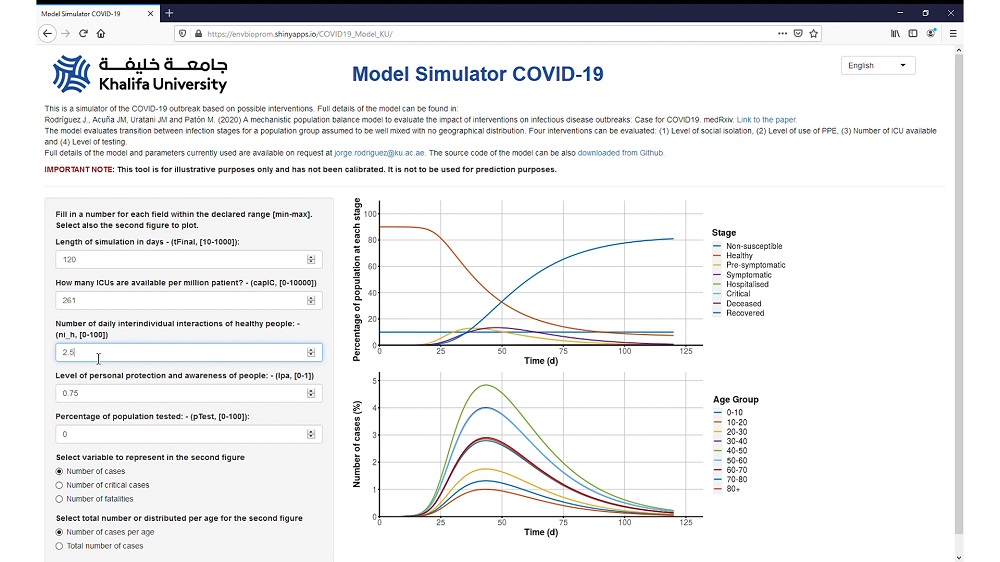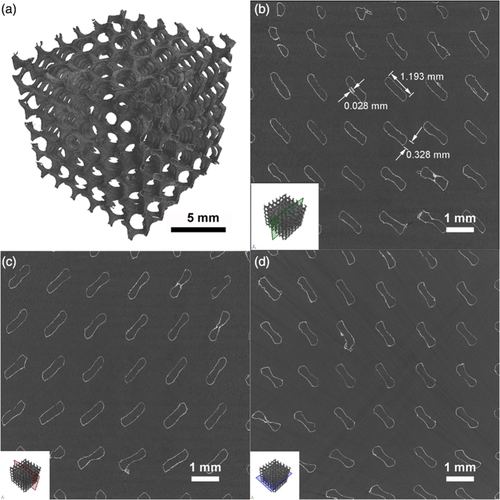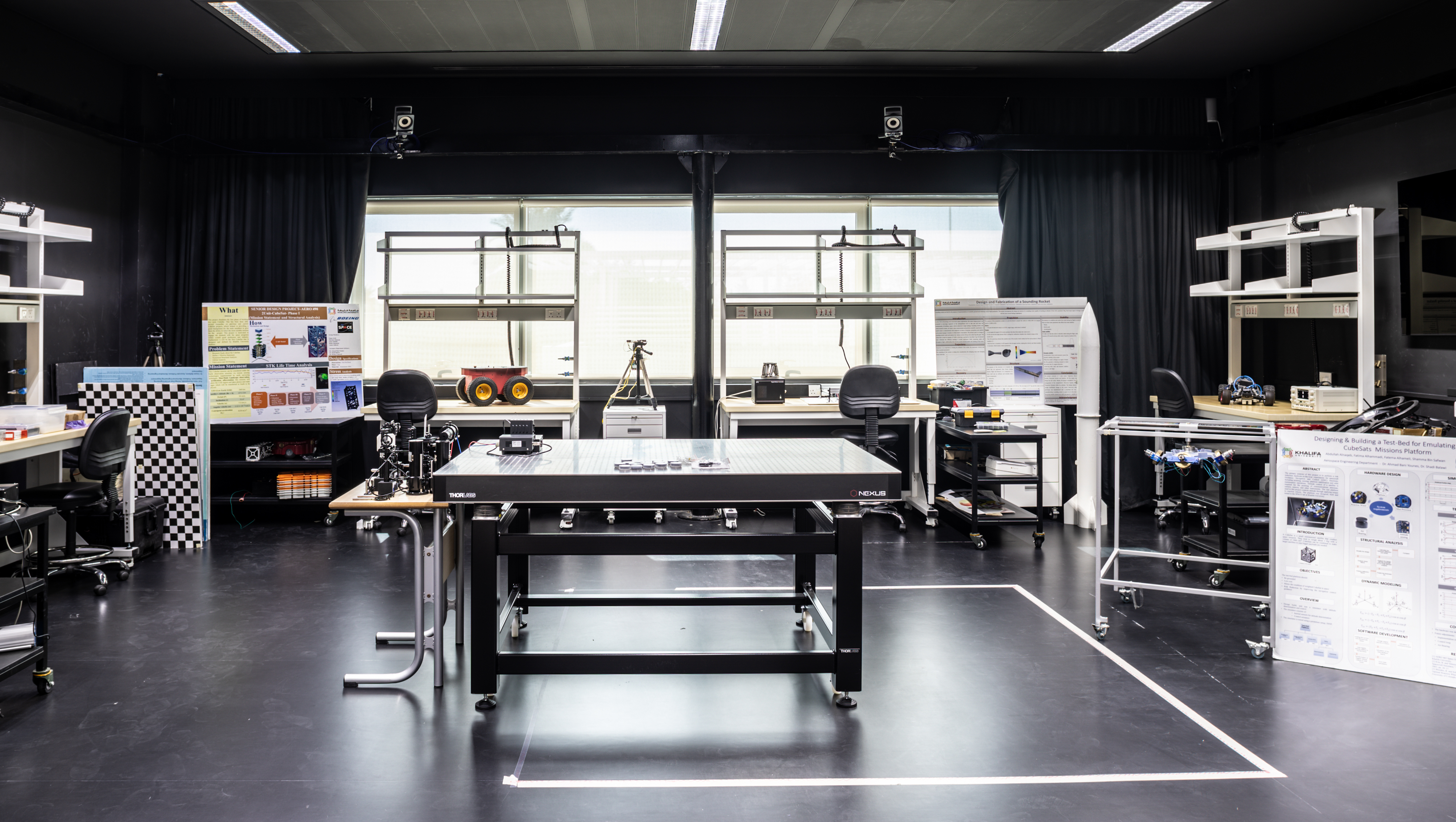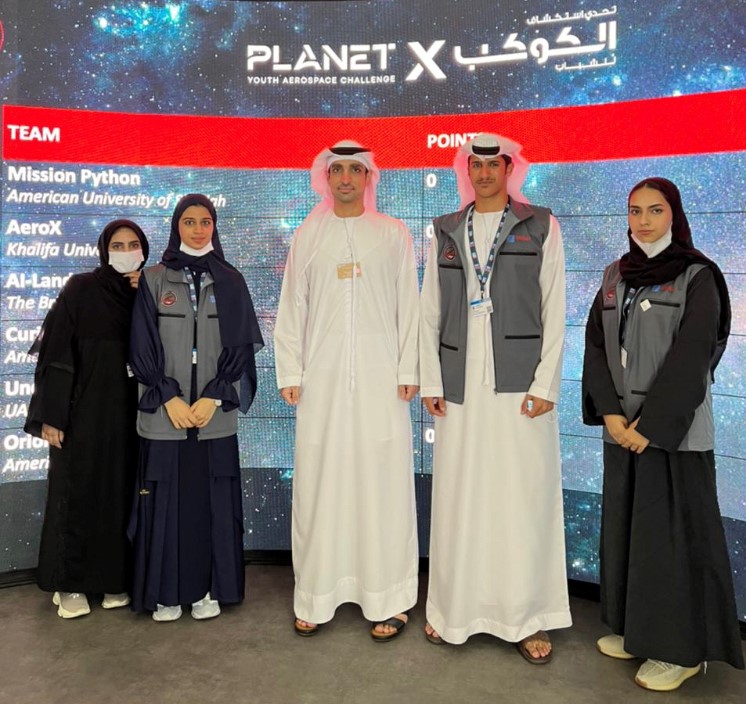
Infectious diseases, especially when new and highly contagious, have the potential to be devastating. Predicting how the disease will spread and how many fatalities it will cause is crucial for societal and healthcare planning and forecasting of resource needs, and for evaluating the impact any intervention would have.
A team of researchers from Khalifa University, led by Dr. Jorge Rodríguez, Associate Professor of Chemical Engineering, has developed a model of the Covid-19 disease impact on a population to provide a stepping stone for non-experts and policymakers to understand what to expect as the disease spreads. An article with the model and results has already been published in preprint form in MedRxiv. They designed the model to be open source, making it available to anyone who wants to plug in the parameters. The model is available here: https://envbioprom.shinyapps.io/COVID19_Model_KU/
“We aimed to develop a model that was meaningful but not complex, that could be updated as more data becomes available, and used as a potential tool to inform public health policy and impact mitigation strategies,” said Dr. Rodríguez.
Nations around the world are responding to the Covid-19 pandemic with varying intensity. While some enforce universal social isolation, such as Italy, others, such as the United Kingdom, are selectively isolating the elderly.
The interdisciplinary KU team, comprising Dr. Rodríguez, Dr. Juan Acuña, Chair of the Department of Epidemiology and Public Health, and, Dr. Mauricio Paton from the Department of Chemical Engineering and Dr. Joao Uratnai , applied these interventions to their model to determine the most effective way to slow the spread of the disease. They also evaluated the use of personal protective equipment, including face masks, and the increase in availability of critical care beds.
“We used data available from the Covid-19 outbreak as of early 2020,” explained Dr. Rodríguez. “Our results are intended to be interpreted qualitatively and serve as a demonstration of the model’s potential if applied with higher confidence parameter values.
“Our preliminary results indicate that universal social isolation measures may be effective in reducing total fatalities, but only if they are strict and the average number of daily social interactions is reduced to very low numbers. Interestingly, selective isolation of only the age groups most vulnerable to the disease appears almost as effective in reducing total fatalities but at a much lower economic impact. Most importantly, our results indicate that ending isolation measures too soon appears to render the previous isolation measures useless as the fatality rate eventually reaches nearly the same result as when nothing is done.”
Using mathematical modelling to understand the potential spread of disease has a long history. With an increasing amount of available data, epidemiological models have improved drastically over the years, providing a more comprehensive understanding of recent outbreaks of diseases, such as Ebola and Zika.
However, epidemiological models have serious limitations in their predictive capabilities.
“The Covid-19 pandemic has brought unprecedented attention to the limitations of traditional modelling approaches,” explained Dr. Rodriguez. “Modelling uses a combination of the best available data from historical events and datasets, various estimations, and assumptions. Then, data about these parameters is computed with statistical tools to develop an epidemic model.”
Dr. Rodríguez brings a unique chemical engineering perspective to overcome some of the limitations faced by traditional epidemiological-based models.
“Population balance models are widely used in chemical engineering to describe the evolution of a population of particles, as they change from one chemical state to another. We realized that these models can describe a process in a way that could be used to predict and hypothesise when data deviates from model predictions.”
The KU researchers developed a model that describes individuals in a population by infection stage and age group. The population is defined as a close, well-mixed community with no migrations, as any country with closed borders would be.
The KU model is based on individuals transitioning between infection stages and segregated by age group. Each individual belongs, in addition to their age group (which they never leave), to only one of the possible states corresponding to the stages of infection, be that healthy, asymptomatic, symptomatic, hospitalised or recovered, among others. The individuals form a close community without any kind of migration. The researchers consider that the model best described a big city with ample use of public transportation. They then applied a number of static and dynamic interventions to the model’s parameters to simulate what would happen to the number of people in each disease stage.
“A static intervention is a sustained action over a parameter, such as asking people to stay home to reduce contact between individuals,” explained Dr. Rodríguez. “In outbreaks, aside from the immediate management of needs and resources, how long we have to wait before we can return to normal becomes of great concern. We also evaluated dynamic interventions, specifically in terms of the ending of social isolation measures once different threshold values of the fatality rate are reached. Doing this allows us to see how long an intervention needs to last, which is of great interest to governments and local authorities who need to decide when to relax an intervention.”
Given the complexity and the expected short and long-term impacts that such public health interventions should have when dealing with disease outbreaks and pandemics, sufficiently complex but user-friendly modelling tools need to be developed. The KU research team has played their part in creating a model that can provide researchers, public health authorities, and the general public with useful information to act in moments of widespread uncertainty. They stress the importance of access to up-to-date data and the need to continually develop the model with more accurate data to offer meaningful solutions to the pandemic.
A key outcome of the model is to improve synergies between academia, policy makers, and the public, as Dr. Rodríguez explained: “Effective communication between healthcare and public health systems and science hubs is considered one of the bigger challenges in both health sciences and public health. We need to not only take effective measures, but do so in a timely manner. This requires strategies for data sharing, generation of information and knowledge, and the timely dissemination of such knowledge for effective implementation.”
Jade Sterling
News and Features Writer
20 April 2020





